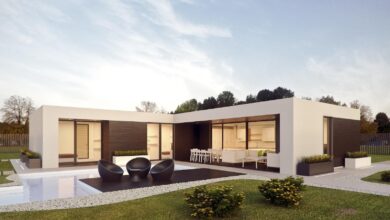Enhance Your Living Area: An Overview of Interior Design

Creating a home that reflects your style while providing comfort and functionality is a rewarding journey. Home design is more than just choosing furniture and paint colors; it’s about crafting a space that feels uniquely yours. Whether you’re building a new home or renovating an existing one, understanding the principles of good design can make all the difference. If you’d like to know more about home design in Melbourne check out Carlisle Homes.
Understanding Your Needs and Lifestyle
Before diving into design details, it’s crucial to assess your lifestyle and needs. Consider how you use each room and what activities take place in your home. Are you an avid cook who needs a spacious kitchen, or do you work from home and require a dedicated office space? Do you have a large family that needs multiple bathrooms, or are you looking for a cozy, intimate setting? Understanding these needs will guide your design choices and help create a home that suits your lifestyle.
One of the most popular trends in modern home design is open-plan living. This design concept involves merging spaces, such as the kitchen, dining, and living areas, into one large, open space. Open-plan living not only makes a home feel more spacious but also enhances natural light and fosters a sense of togetherness. Families and those who enjoy entertaining will find it ideal. To create a cohesive look in an open-plan space, use a consistent color palette and flooring material throughout the area.
Creating Sustainable Homes
When planning your home design, the orientation of the home and the placement of windows are of prime importance. Large windows, skylights, and glass doors can significantly increase the amount of natural light in your home. Additionally, using light-colored walls and reflective surfaces, such as mirrors and glass, can help to amplify the natural light.
Your choice of colors can greatly influence the mood and feel of home. Neutral tones such as white, beige, and gray are timeless and can make a space feel calm and sophisticated. Vibrant and individuality can be added by using bold colors as accents. When selecting a color palette, the size of the rooms, the amount of natural light, and the atmosphere required to create are considered. For instance, soft blues and greens can create a serene environment, while warm reds and oranges can make a space feel cozy and inviting.
Additionally, sustainability is becoming increasingly important in home design. Using eco-friendly materials such as bamboo flooring, recycled glass countertops, and low-VOC paints are considered primarily. Energy-efficient appliances, solar panels, and proper insulation can reduce your home’s environmental footprint and save on utility bills. Sustainable design choices not only benefit the planet but also create a healthier living environment.
Conclusion
In conclusion, Creating a home that aligns with your lifestyle and values involves thoughtful choices. Open-plan living enhances space and natural light, while color palettes set the mood. Prioritize sustainability by using eco-friendly materials and energy-efficient solutions. Let’s build homes that nurture both our well-being and the environment!



